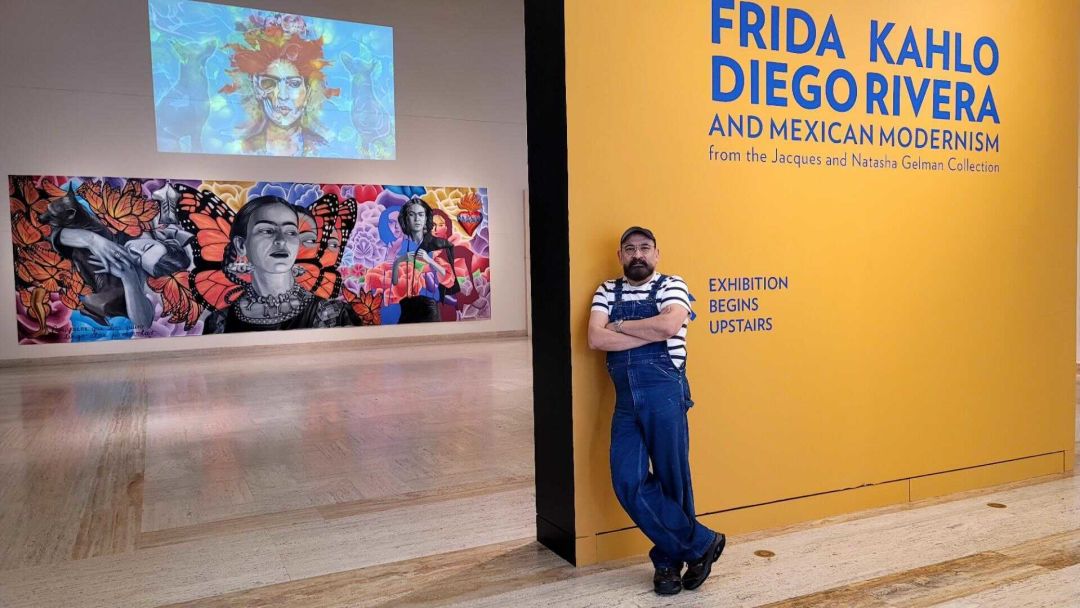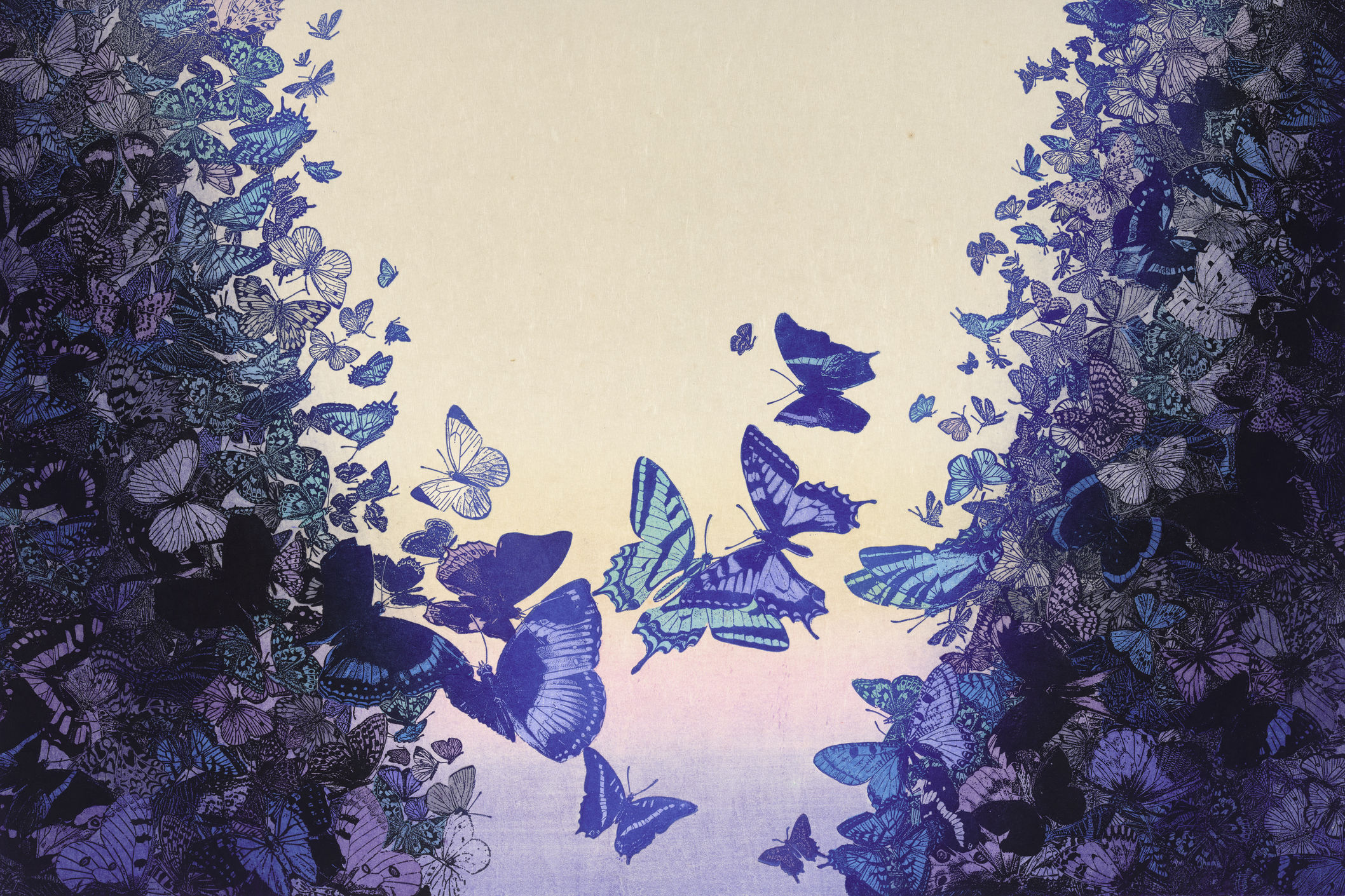PAM’s Frida Kahlo Exhibit Is More Than a Study in History

Hector Hernandez in front of Metamorphosis Mural at Portland Art Museum.
Image: Courtesy Hector Hernandez
If you’ve been to the Portland Art Museum’s Frida Kahlo exhibit in recent weeks—and if the crowds are anything to go by, a lot of you have—you may have noticed a bit of Portland’s DIY spirit just outside the main exhibition hall. For the first month of PAM’s Frida Kahlo, Diego Rivera, and Mexican Modernism exhibition, four local artists have worked in full view of the public to complete an enormous, colorful triptych called Metamorphosis Mural, which depicts three Kahlos surrounded by flowers and flaming hearts. One Frida is in the throes of her physical ailments, tenderly cradling a dog; one is triumphant, flanked by butterflies whose wings bear her searing eyes; the final is a gender-bent rock star navigating her masculine and feminine influences.
The mural—which was completed at the beginning of April—has taken inspiration from several sources. One is José Clemente Orozco, who painted a massive mural in front of patrons at New York’s Museum of Modern Art in the early 20th century; another is Patti Smith, whose Horses album cover is directly referenced. And one is much closer to home: Hector Hernandez, a Portland artist who has completed public works all across the city, and currently teaches muralism at Portland State University.
“I said, ‘What if I paint a mural during the exhibition, because that way, you will have not only the pieces in the exhibition, but a piece that is in progress,’” says Hernandez from his studio on NE Broadway. “We are talking about Mexican Modernism. And an essential part of Mexican Modernism’s contribution to the world is Mexican muralism.”
Hernandez has collaborated with PAM before, on a Día de Los Muertos display, and just before the pandemic, the museum informed him they were planning to mount the Kahlo exhibit. (The exhibition is a traveling one, pulled from the collections of Kahlo and Rivera’s contemporaries Natasha and Jacques Gelman.)
He immediately proposed a collaboration, which COVID sidelined until late 2021, when Hernandez reached back out to reignite the conversation. PAM brought him on board, and Hernandez tapped a variety of other artists he’s collaborated with around town—Angennette Escobar, whom he knows through the Pearl District’s Blackfish Gallery, fellow muralist Christian J. Barrios, an instructor with the Right Brain Initiative, and video artist Victor Hugo Garza, whom Hernandez hoped would add a contemporary digital element.
The group worked for a month, each contributing details and tweaks to Hernandez’s original vision (the Patti Smith was an Escobar touch) while art-starved audiences filed through the exhibit. Hernandez says he’s used to working in view of the public—it’s par for the course for muralists—but he’d never done so in a museum setting. “The interactions are more intense. People are more intrigued, they have more curiosity,” he says. “In both cases, people come to you and say, ‘Why are you here? Why are you painting this? Who allows you to work in here?’ Not very often, and in the setting of the museum, there’s already endorsements, but it happens in both cases.”
Originally, PAM planned to chop the mural into pieces on completion and distribute it throughout the exhibition, but Hernandez says the public and museum sponsors were so fond of it that they didn’t dare. Instead, they’ll keep it intact and move it to another wall in the Arlene Schnitzer sculpture court while Latino Artist Exchange IDEAL PDX starts work on a follow-up piece. In the meantime, the artists behind Metamorphosis Murali will field a chat about their process at PAM on Sunday, April 10.
“This mural is getting its own life. I was thinking the mural would be done, they would cut it, and put it up in other places, but now, people are having some sort of ownership, I feel,” says Hernandez. “They like it, and I feel that it is no longer 100 percent mine. I don’t have that feeling anymore that I can dispose of the mural in whatever way. The mural is becoming a creature in its own. I like that."




